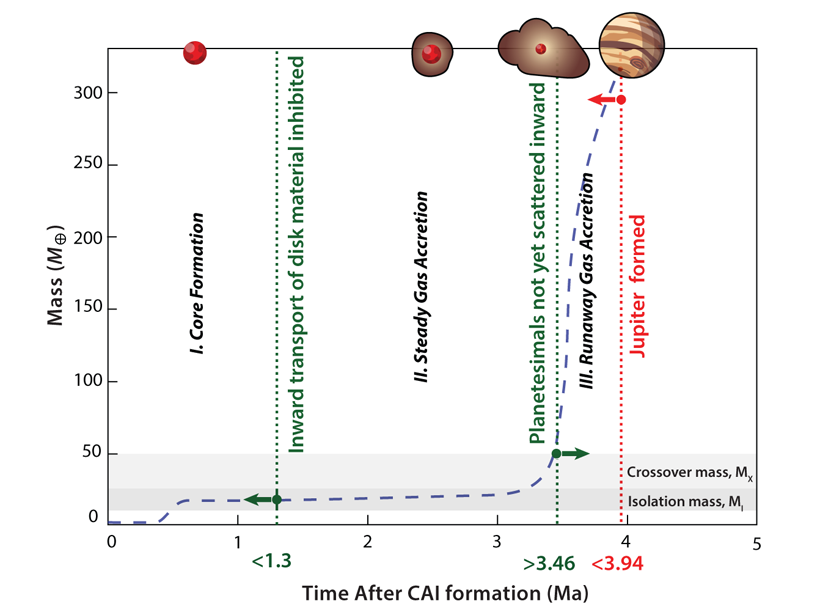Source: AGU Advances
Gas giants exert a major control on solar system architecture. Observations of disks like those by the Atacama Large Millimeter/submillimeter Array (ALMA) reveal early stages of planet formation in far-away stellar systems. But timing of giant planet formation processes can best be traced via detailed investigations possible in our solar system. A commentary by Weiss and Bottke [2021] closely examines Jupiter formation, using clues preserved in the meteorite record. They find current data are consistent with an initial “slow growth” phase for Jupiter that created separate isotopic reservoirs for meteorite parent bodies. Subsequently, paleomagnetic data suggest rapid dissipation of the nebular field, most easily explained by rapid (greater than 30 times) growth of Jupiter, which supports a core accretion physical model for giant planets. The case is not closed, however. Weiss and Bottke propose further observations and physical modeling to establish the pacing of Jupiter formation and its effects on the architecture of our solar system.
Citation: Weiss, B. & Bottke, W. [2021]. What Do Meteorites Tell Us About the Formation of Jupiter? AGU Advances, 2, e2020AV000376. https://doi.org/10.1029/2020AV000376
—Bethany Ehlmann, Editor, AGU Advances
Text © 2021. The authors. CC BY-NC-ND 3.0
Except where otherwise noted, images are subject to copyright. Any reuse without express permission from the copyright owner is prohibited.

